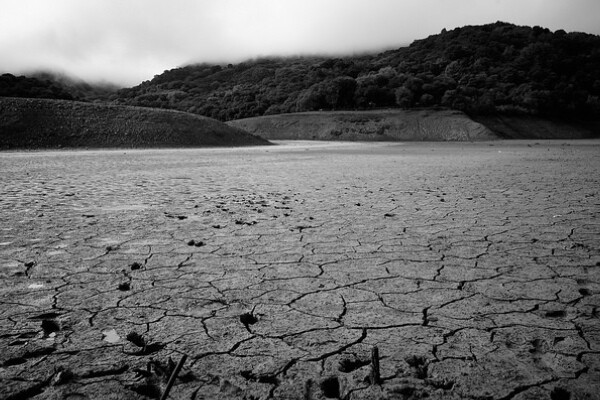California's Drought Is Affecting Our Food Supply

Living in the midst of a historic drought is a strange existence in our current day and age. Because of how our water delivery system is set up, and how far removed most of us are from growing the food we eat, we never really have to worry about going without water. Maybe the monthly bill will be a tad higher, and maybe we'll have to listen to more warnings about how to conserve water, but our faucets won't be going dry anytime soon. But since nothing extremely serious happens to us, a few days of rain -- like what happened earlier this month -- may give everyone the impression the drought's over.
It isn't. Not by a long shot.
We're still in the trenches of the worst drought that the state has experienced in the past few centuries. It's so bad, in fact, the state's being forced to take extreme measures to battle some of the under-reported side effects of having no water. For instance, sticking millions of young salmon on trucks and driving them to the ocean.
Here's the issue at stake: Red Bluff is home to the largest fish hatchery in the state. Built after the 1945 construction of the Shasta Dam caused the state's salmon population to be decimated, it now produces nearly 12 million salmon a year. Usually, the young salmon are released into the wild in April and May, make the swim down the Sacramento River, and are then ultimately caught and used in restaurants and markets throughout the state; in all, the California salmon industry takes in billions of dollars. But this year, because of the drought, the Sacramento River is too shallow for the salmon to make the journey:
"The conditions may be so poor as to produce unacceptable levels of mortality for the out-migrating juveniles," said Bob Clarke, fisheries program supervisor at the U.S. Fish and Wildlife Service.
So, one of the ideas being contemplated to solve this problem is sticking the millions of young salmon onto trucks, driving them the 156 miles down to San Pablo Bay, and releasing them there.
Now, this is one of those "last ditch" ideas that's really only being considered because the situation is as dire as it is. (They've gone on record as saying this idea will immediately get axed if rain suddenly drops out of the sky.) And that's because trucking salmon is not all that great. Salmon tend to instinctively record where they were released from as "home," so when they make a return trip upriver to spawn again, they'd normally return to the hatchery. But without the journey down river on their own, they may migrate back to wrong locations. Also, swimming the river gives salmon a more gradual change of temperature and chemistry, rather than the shock of being suddenly thrust into the bay, which weakens them and gives them a higher chance of being attacked by predators.
Which is to say, this isn't the best plan. But in our current state, it's a necessary one. It's also a good reminder that although the water is still running in our faucets, and rain made driving more annoying for us those few days in early March, that doesn't mean we should forget the drought is over. In fact, here are a few other examples of just how dry our state is:
-- This year, the state's hydroelectric plants have generated the lowest amount of electricity in 23 years, nearly half of its normal output. Consumers haven't been affected by this because of the state's reliance on other forms of energy, including solar, wind, and natural gas. At least, it hasn't been affected yet.
-- The tricolored blackbird, a California-based species that numbers about 250,000, may be placed on the endangered species list later this year if they undergo the massive die-out predicted by environmentalists. This is because the drought may force the birds out of sanctuaries and onto the state's farmland, which farmers are harvesting as quickly as possible this year before water prices rise, a combination of actions that essentially gives the birds no place to live.
-- As the water in man-made reservoirs continues to dry out, water managers are turning their attention towards digging into underwater fresh lakes to meet the demand. While this offers a temporary solution, it's also kind of a last resort. Even considering this idea is indicative of how bad the situation really is.
Which should all be constant reminders that those few days of hard rain that happened a few weeks ago? It was great and all, but still isn't nearly enough to get us out of this drought. So make sure to continue making the proper water-saving adjustments to your life.


